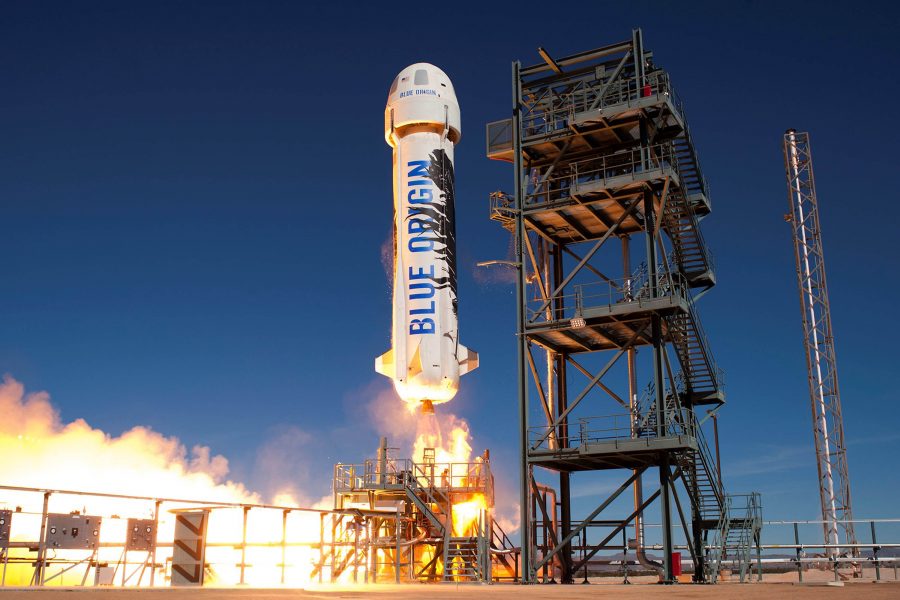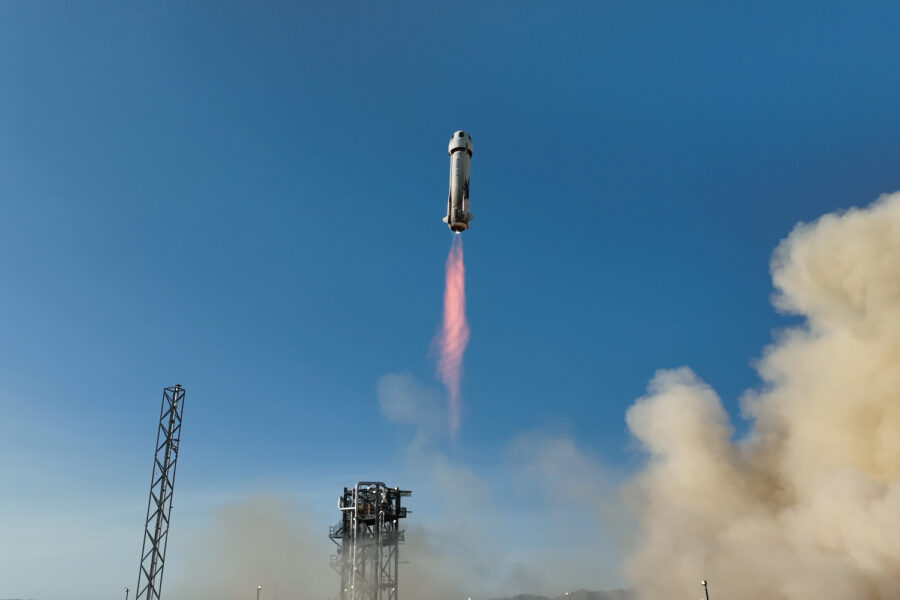Blue Origin Rocket Spews So Much Methane It Can Be Viewed From Space

According to a recent report from Bloomberg, Jeff Bezos’ Blue Origin rockets are regularly emitting enough methane that their pollution can be seen from outer space. Despite the billionaire’s recent pledge to limit pollution, it seems that his Blue Origin facility headquarters in West Texas has continued to get worse with its spread of emissions into the atmosphere. A nonprofit organization recently detected the methane signatures, which estimated over 1.5 metric tons of methane originating from the facilities’ location per hour.
According to a nonprofit organization, Blue Origins rockets are emitting dangerous amounts of methane.
The nonprofit that detected the rocket pollution was Carbon Mapper, operating out of a headquarters in Pasadena, California. Carbon Mapper utilized instruments on the International Space Station to ascertain these findings, which show an unprecedented amount of methane spewing from the Blue Origin facility. The Carbon Mapper website even contains a visual aid, displaying a map showing massive dark clouds of pollution shrouding the West Texas location.
The Blue Origin location spewing the rocket pollution is known as Launch Site One and serves as the main base of operations for the company’s space tourism department.
The company famously allows passengers to purchase a ticket to be launched into space for a brief period, totaling somewhere from $250,000 to $500,000 for a 15-minute ride to the edge of space and back. Jeff Bezos himself has embarked upon this journey, along with a number of millionaire and billionaire passengers, including Star Trek‘s William Shatner.
Until now, the figures regarding company’s rocket pollution have been kept under wraps from the general public, making it impossible to know for sure if these figures of 1.5 metric tons per hour are outliers or par for the course.
Blue Origin’s flagship rocket engine has been known to require a great deal of pollution-causing methane in order to function for propulsion, though these recent figures uncovered by Carbon Mapper are significantly higher than previously believed.
A spokesman for the rocket and defense contract company claimed in a statement to Bloomberg that this was standard operating procedure, but the plumes of methane emissions seem to speak for themselves.
Until now, the figures regarding the company’s rocket pollution have been kept under wraps from the general public, making it impossible to know if these figures of 1.5 metric tons per hour are outliers or par for the course.

However, according to an air permit procured by Blue Origin, the company claims that it will emit roughly 60 tons of methane in the calendar year. If the company stays on its streak of 1.5 tons per hour, it will have reached this goal within fewer than two full days.
The global energy industry emits a staggering 135 million tons of methane per year according to figures released in 2022, making the use of the gas highly troubling.
Beyond serving as a pollutant from sources such as rocket fuel, methane has remained an urgent priority for scientists looking to cut humanity’s carbon footprint. The greenhouse gas is estimated to be responsible for more than a quarter of all global warming pollution, even prompting global leaders to hold summits to deter its use.
The global energy industry emits a staggering 135 million tons of methane per year, according to figures released in 2022, making the use of the gas highly troubling.
Despite rocket pollution from Blue Origin not serving as the largest source of methane gas in the atmosphere, the company’s contribution to the West Texas pollution clouds cannot be ignored, prompting many environmentalists to call on the United States government to enforce stricter regulations for the Jeff Bezos-owned company.











